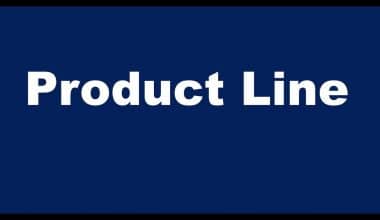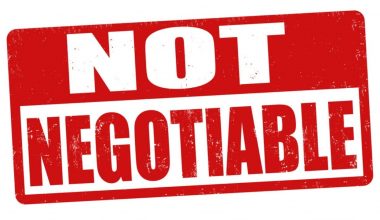The ecommerce landscape has seen tremendous growth over the past few years. More and more people are shopping online for everything from groceries to furniture. But with increasing competition, it can be challenging for ecommerce businesses to acquire and retain customers. This is where search engine optimization (SEO) comes in.
Implementing the right SEO tactics can help drive organic traffic, improve visibility, and ultimately boost sales for your ecommerce business. If you want a working digital marketing strategy, then you ignore SEO at your peril.
Keyword Research Lays the Foundation
The foundation of any good SEO strategy begins with extensive keyword research. Finding the right keywords that your potential customers are searching for can unlock a treasure trove of targeted traffic for your ecommerce site.
Focus on identifying high-volume keywords in your niche that have relatively low competition. This increases your chances of ranking for them. You also need to understand the intent behind the keywords – whether users are searching for informational content or are ready to make a purchase.
What is Enhanced On-site Search?
Enhanced, on-site search refers to a feature found in websites and apps enabling users to effortlessly locate the content they are looking for. However, the default search tools often fall short in terms of relevance and precision. This is where solutions like on-site search tools can make an impact.
LupaSearch is specifically designed to offer on-site search capabilities compared to traditional options. It leverages advanced natural language processing and machine learning algorithms to comprehend the user’s intent behind their queries.
By doing so it can provide pertinent results even if the user does not input precise keywords. This greatly aids users in finding their desired pages or products thereby boosting conversion rates and maximizing sales profits.
The Benefits of Improved On-Site Search
This on-site search tool offers features such as auto-suggested results to swiftly guide users toward the appropriate pages. The search engine learns from user behavior over time leading to enhancements in accuracy.
It also structures results logically for scanning and selection. For e-commerce owners implementing this kind of tool offers advantages. Firstly it enhances user experience and satisfaction by enabling visitors to find the information they seek. This can help decrease bounce rates and improve the amount of time visitors spend on the website.
Moreover, it improves search engine optimization (SEO) by simplifying the process for both search engine bots and users to navigate and index website content. Lastly, the valuable data provided by on-site search enables websites to optimize their content and navigation according to user search behavior patterns.
Optimizing On-Page Elements
With your list of target keywords in hand, the next step is optimizing your on-page SEO. This includes things like page titles, product descriptions, metadata, alt text, and internal linking. The goal is to optimize each page to rank for a specific keyword.
Product Titles and Descriptions
Your product titles and descriptions offer prime real estate for optimizing with keywords. But it’s crucial to strike the right balance – overstuffing keywords looks spammy. Instead, seamlessly blend them into compelling, benefit-focused copy. This engages users while also appealing to search engines.
Image Alt Text
Alt text for product images serves two purposes – making your site accessible for screen readers and optimizing for image search. Write descriptive alt text that includes the core keyword while accurately portraying what’s in the image. For example, “Brown leather couch with reclining seats” is far better than just “couch”.
Page Metadata
Optimized page titles and meta descriptions give search engines a summary of what each page is about. Be succinct and target keywords in both.
Page titles can include your brand, product name, and 2-3 critical keywords. Meta descriptions have a 160-character limit – lead with your most important keyword phrase.
Internal Linking
Links between related products and pages help search engines crawl your site and signal relevancy. When linking internally, use anchor text with target keywords.
Building Authority with Content
Beyond just products, creating authoritative, engaging content is a proven way to attract organic traffic and establish domain authority.
Long-form blog posts are a great opportunity to target keywords and provide value to readers. For example, roundup posts, how-tos, and buying guides related to your niche can bring in highly qualified visitors.
Infographics, videos, and other visual content can also help your pages stand out in search results and engage visitors. Each piece of content should offer genuine value to users while optimizing for a core keyword.
Gaining Backlinks from Authority Sites
Backlinks remain one of the most important ranking factors. Earning backlinks from reputable sites reinforces your domain authority and boosts organic visibility.
Outreach for guest posts on authority sites and influencer blogs is an excellent link-building tactic. Pitch contributed posts that provide unique value for their audience.
Affiliate programs incentivize external sites to link back to you. Partnerships with complementary brands also allow for cross-linking opportunities.
The key is to build links slowly and steadily from diverse relevant sites. Avoid low-quality networks and spammy tactics. Focus on forging genuine connections.
Local SEO Tactics
For ecommerce stores selling to local markets, optimizing for local SEO is crucial. It helps you connect with nearby customers searching for products or services. Start by using locally-optimized keywords and schema markup. This conveys to search engines that you cater to a specific region. Ensuring your Google My Business listing is filled out also enhances local visibility. Same for other directories like Yelp.
Building localized links from directories, newspapers, and niche sites related to your region further lifts your local ranking.
Additional Tactics for Consideration
In addition, to core SEO techniques there are a few marketing strategies that complement it nicely;
- Email marketing is a way to nurture leads that you’ve captured through SEO.
- Retargeting campaigns allow you to display targeted ads across the web to people who have previously visited your site.
- Social media ads can expand your reach and visibility effectively supplementing your SEO efforts.
- SMS and text message marketing enables you to send promotions to customer phones leading to increased sales.
- Improving the user experience (UX) of your site as its speed and navigation removes any obstacles in the customer journey.
- Understanding A/B testing and using it for pricing models, promotions, offers, etc. provides data for optimizing conversions.
Optimizing for Featured Snippets
To optimize your chances of appearing in the featured snippets spot, on Google and drive qualified traffic there are a few key strategies to consider.
Understand User Intent
First, it’s important to understand user intent by identifying keywords that indicate a product search, like ” backpack for travel” or “most comfortable office chair.”
Create Useful Content
Once you have these keywords create content that thoroughly addresses the user’s query and provides a recommendation. Make sure your content has a structure and includes headings that target the focus keyword.
Optimize for Voice Search
In addition to written content, it’s essential to optimize for voice search. Featured snippets are designed to cater to voice searches so it’s important to use language and construct correct sentences that are optimized for speech.
Final Thoughts
Implementing SEO practices can help generate search traffic and increase e-commerce sales for your brand or community. It also positions you as an authority, in the marketplace. Allows you to thrive amidst competition.
To effectively serve customers and achieve growth in your ecommerce business it is essential to prioritize delivering content and implementing marketing strategies. Staying informed about SEO practices is crucial, as algorithms are constantly evolving.
Focus on delivering value to customers through optimized content and robust marketing tactics.To ensure the growth and success of your e-commerce business, in the run it’s crucial to stay updated with the latest SEO best practices, as algorithms continue to evolve.






